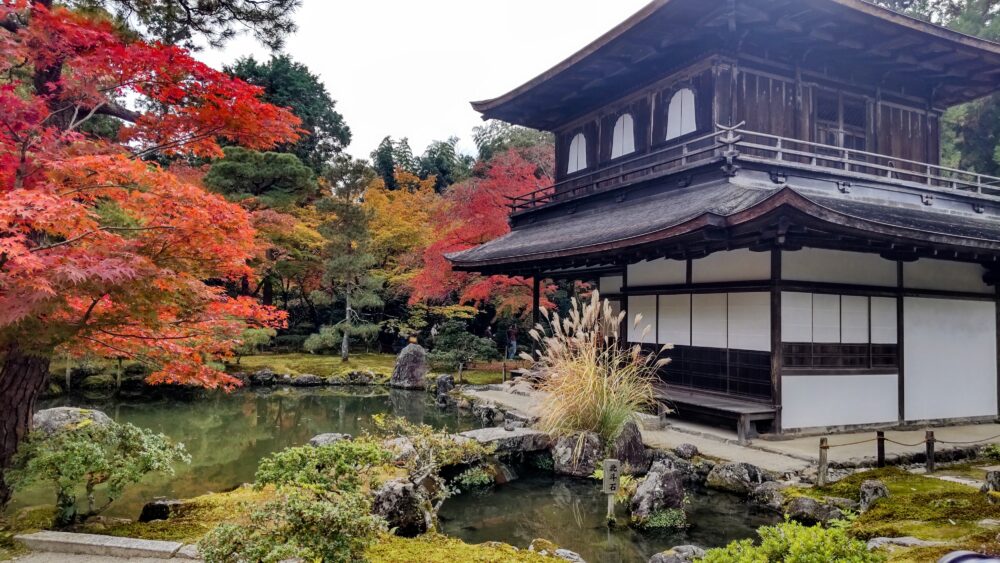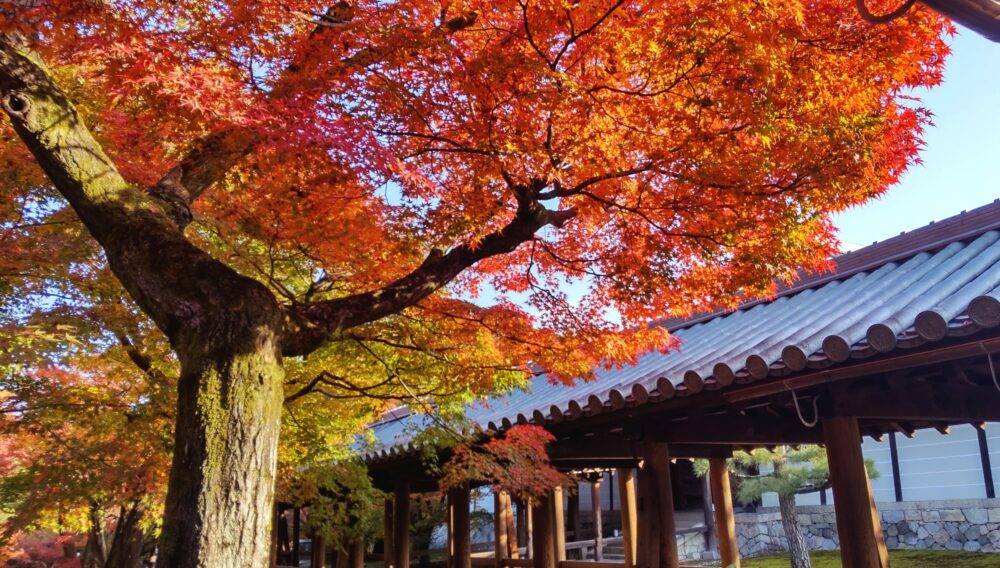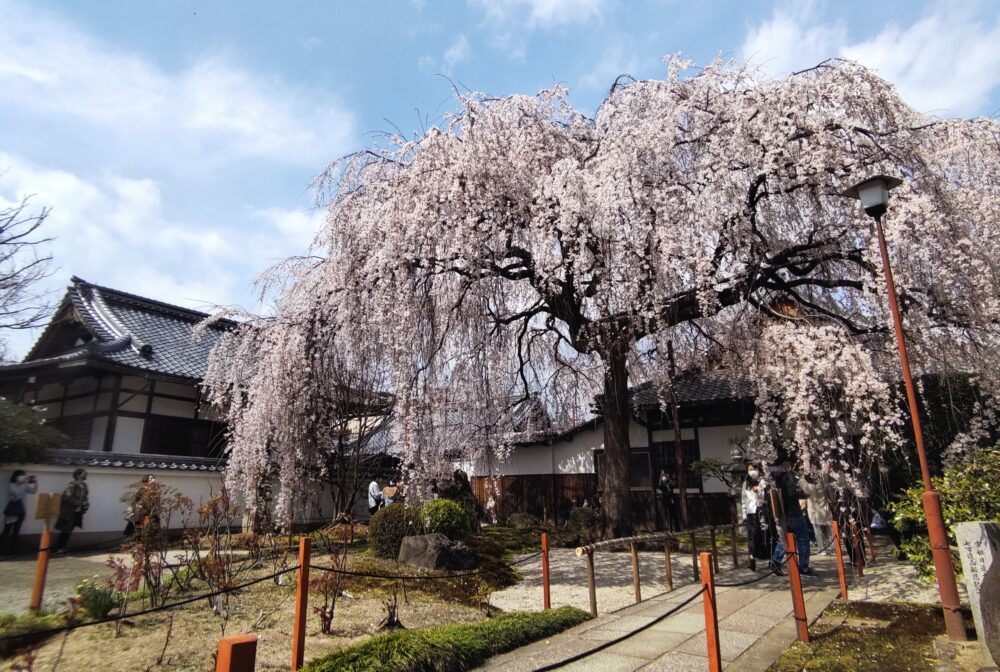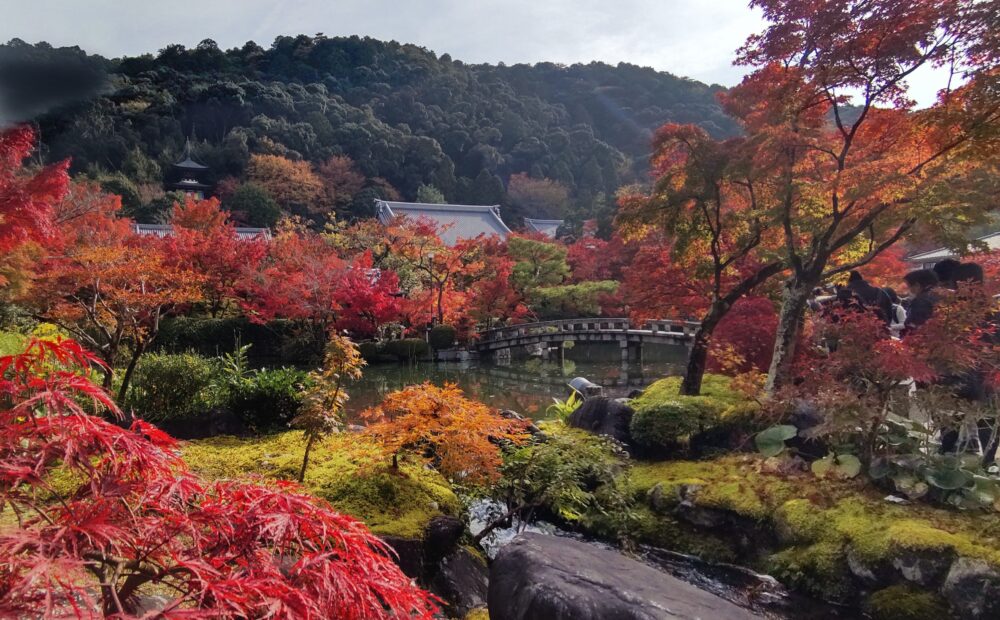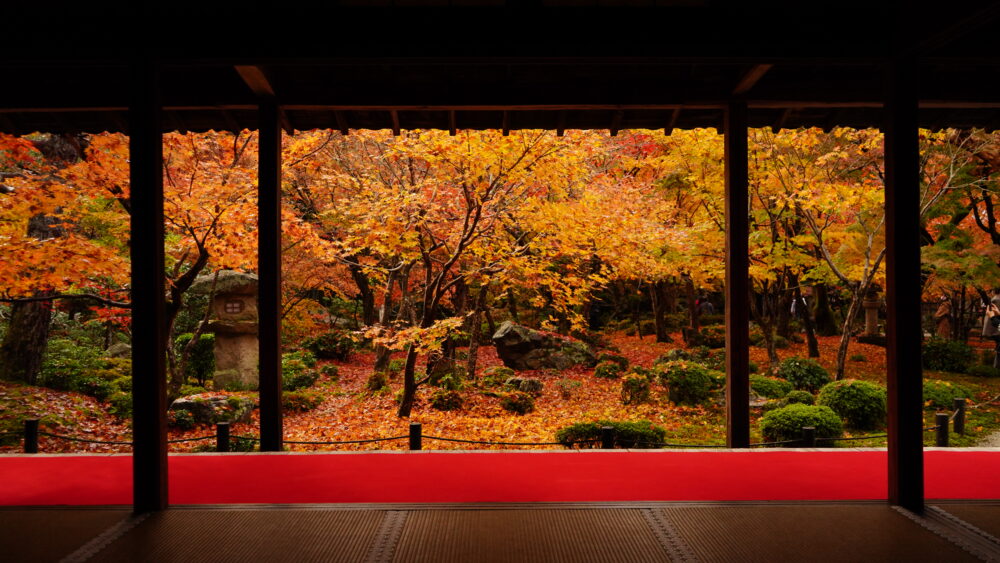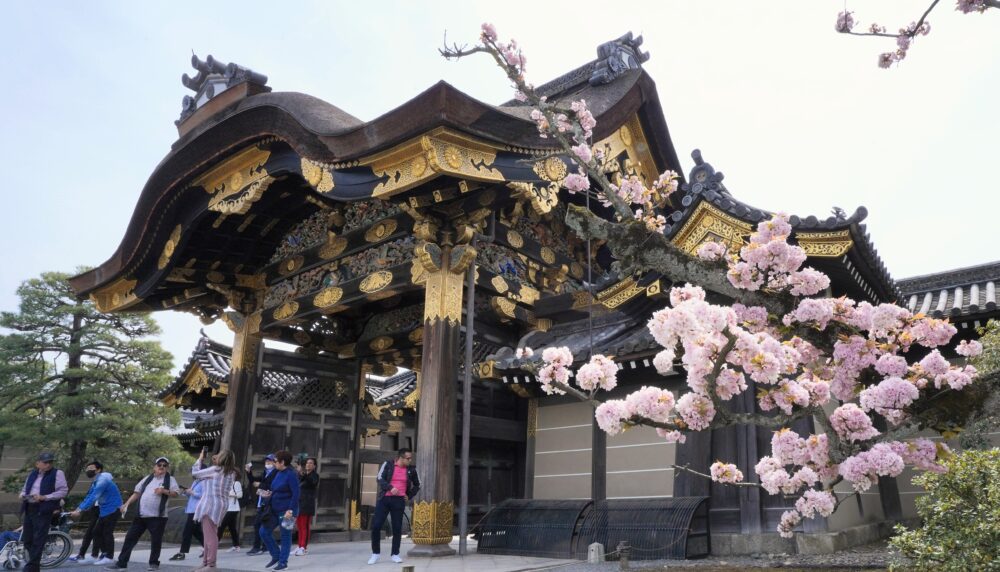Chion-in Temple | Best Time to Visit
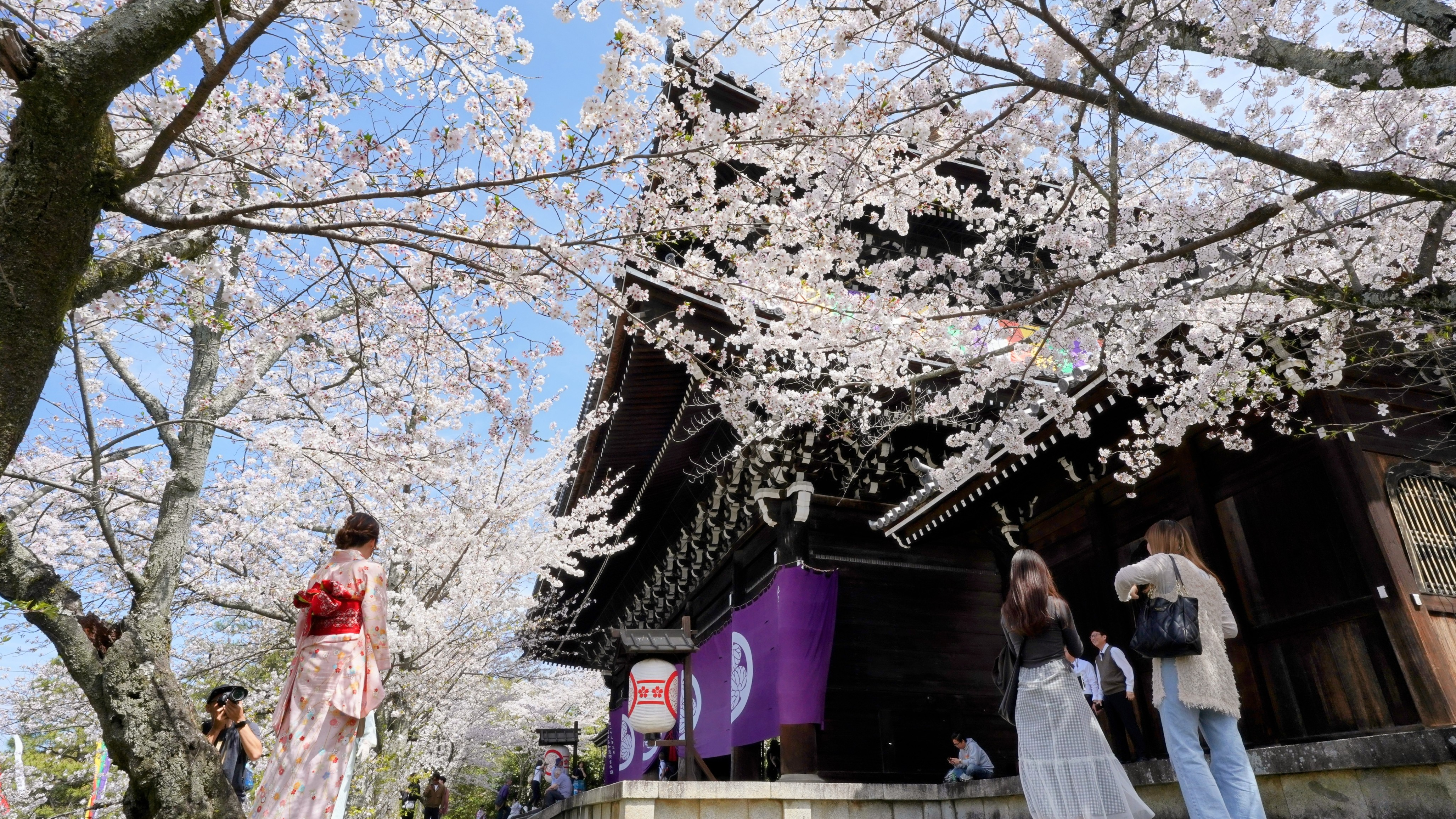
Chion-in Temple is transformed into a magical realm during the Spring Illumination Event, which takes place in late March and early April. The highlight of the event is the enchanting illumination of two early-blooming weeping cherry trees in the Yuzenen Garden. In addition, the temple’s iconic structures, including the National Treasure Sanmon Gate and the Goeido Hall, are bathed in soft light, creating a serene and awe-inspiring atmosphere.
History
The origins of Chionin Temple can be traced back to 1175, when Honen, the founder of the Jodo sect, established a humble thatched hut on the present site. Here he devoted himself to propagating the Nembutsu, which involves reciting the name of Buddha Amida Buddha to achieve mindfulness and salvation.
After Honen’s death in 1212, his disciples built a mausoleum to honor his memory. Genchi, one of Honen’s disciples, was appointed the first abbot in 1234 and named the temple “Kachozan Chion-kyoin Otani-ji Temple. Despite setbacks such as fires and the devastating Onin War, the temple has been rebuilt many times, a testament to its enduring spirit.
Buildings
With its long history, Chion-in Temple houses many buildings designated as national treasures and important cultural relics.
Sanmon Gate
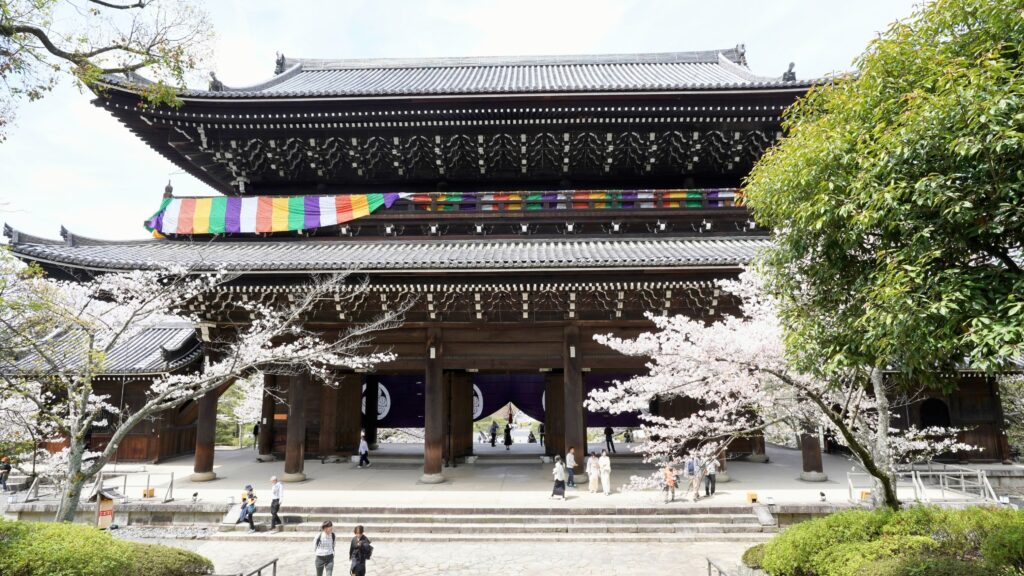
Sanmon Gate, a prime example, was built in 1621. This imposing wooden structure, with its irimoya-zukuri, a traditional Japanese roof style that combines a hipped roof with a gable roof, and hon-gawara-buki, a roof tiled with alternating rows of flat and round tiles, stands 6.5ft( 24m) high and 164ft(50m) wide. It is one of the largest wooden gates in Japan, with a massive hanging sign inscribed “Kachozan” that spans 40ft2(3.6m2).
Mieido Hall
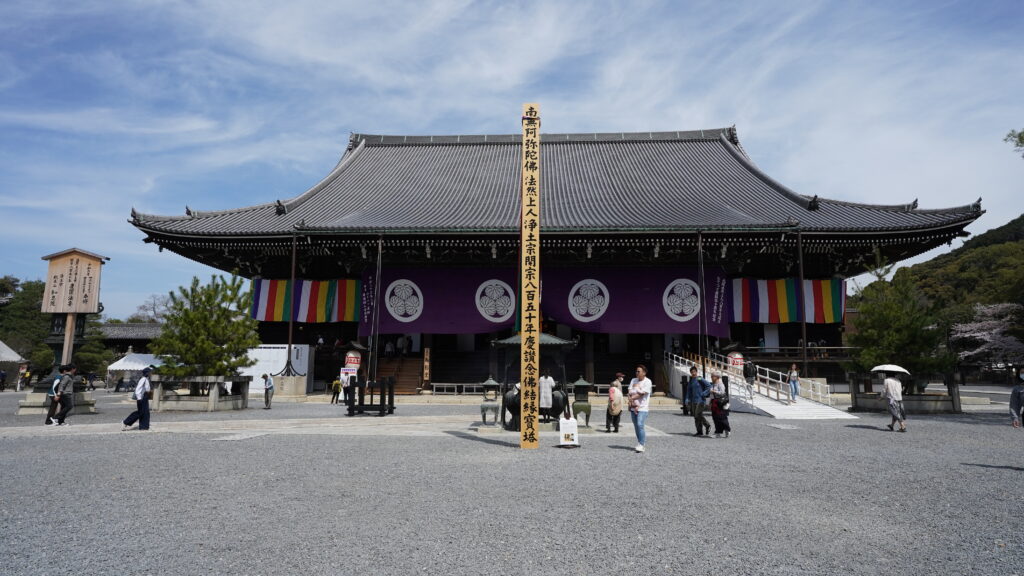
Mieido Hall, named for the enshrined image of Honen, the founder of the Jodo sect, is a magnificent structure. Built in 1639 under the auspices of the third Tokugawa shogun, Iemitsu, the hall measures an impressive 484ft2 (45 m2) wide by 405ft2 (35 m2) deep, with walls that are 9ft (3 m) thick. Pilgrims travel here to pay homage to the spirit of Honen.
Shuedo Hall
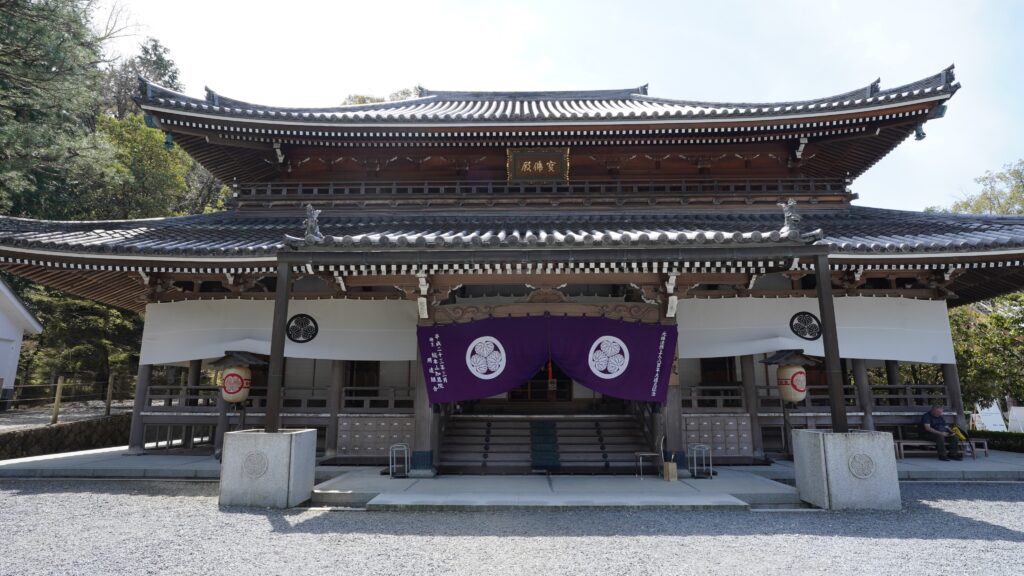
Shuedo Hall, named for the enshrined image of Honen, the founder of the Jodo sect, is a magnificent structure. Built in 1639 under the auspices of the third Tokugawa shogun, Iemitsu, the hall measures an impressive 484ft2 (45 m2) wide by 405ft2 (35 m2) deep, with walls that are 9ft (3 m) thick. Pilgrims travel here to pay homage to the spirit of Honen who was buddhist priest who founded the Jodo-shu sect of Japanese Pure Land Buddhism..
Kyozo Storehouse
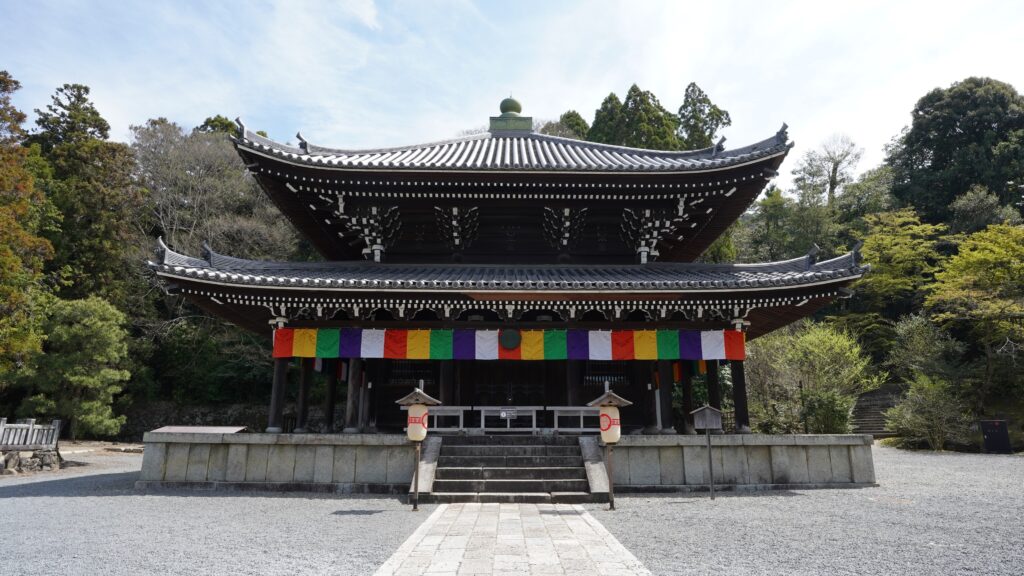
Kyozo was built in the same year as the Sanmon Gate, 1621. Although not open to the public, its interior is adorned with beautiful paintings by artists of the Kano school, covering the ceiling, pillars, and walls.
Gardens
Chion-in Temple boasts four distinct types of gardens, each captivating visitors with its unique beauty.
Hojo-Teien Garden
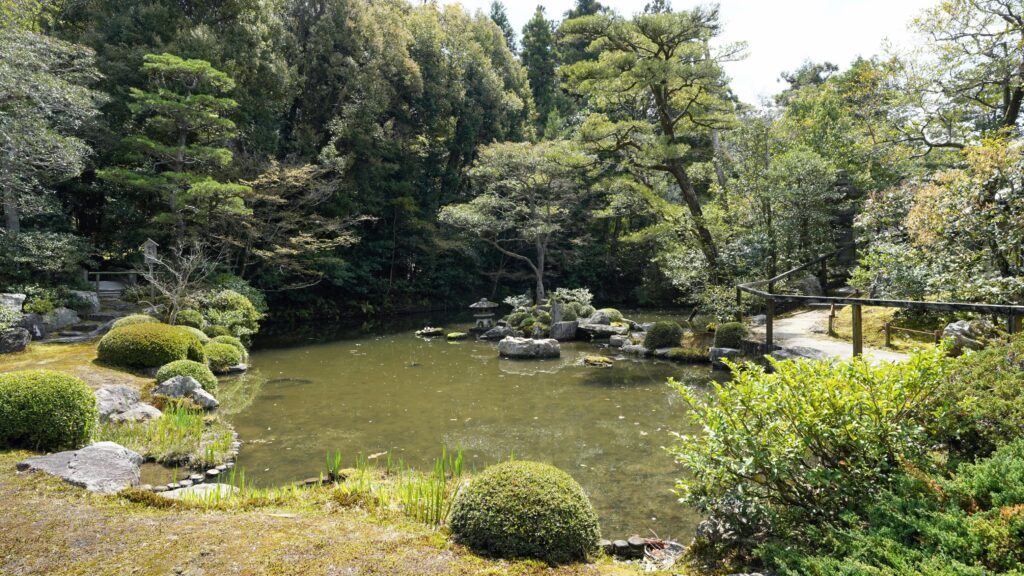
The Hojo Garden was designed by Gyokuenbo and Ryoami, the architects of the Katsura Imperial Villa. The garden features a heart-shaped pond, known as Shinji-ike, with an island connected by a stone bridge. Towering, angular stones from the Kishyu region, famous for their blue hue, are placed throughout the garden.
The three-dimensional aspect of the garden is enhanced by azaleas cut into rounded shapes that surround the island and pond. In addition, the garden borrows the scenery of Mt. Higashiyama, creating a sense of depth. Near the pond, pine trees were planted by the Showa Emperor and Tokugawa Ieyasu Shogun.
Twenty-Five Bodhisattva Garden
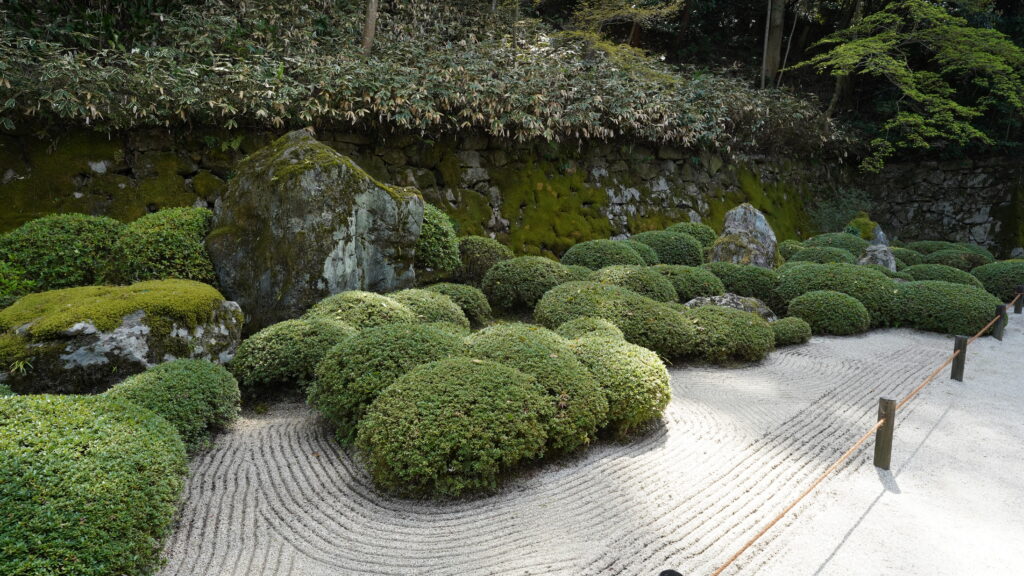
East of the Shohojo Hall is the “Twenty-Five Bodhisattva Garden,” a unique kare-sansui garden. Inspired by Chion-in Temple’s national treasure, “Raigo of Amida and Twenty-five Attendants,” the garden features cut azaleas representing the welcoming clouds that guide souls to the Pure Land, while the stones symbolize Amitabha Buddha and the twenty-five bodhisattvas.
The design of the garden conveys the concept of being guided to the Pure Land through the recitation of the Nembutsu at the moment of death, expressed through the arrangement of stones, sculpted shrubs, and white gravel.
Santei Garden
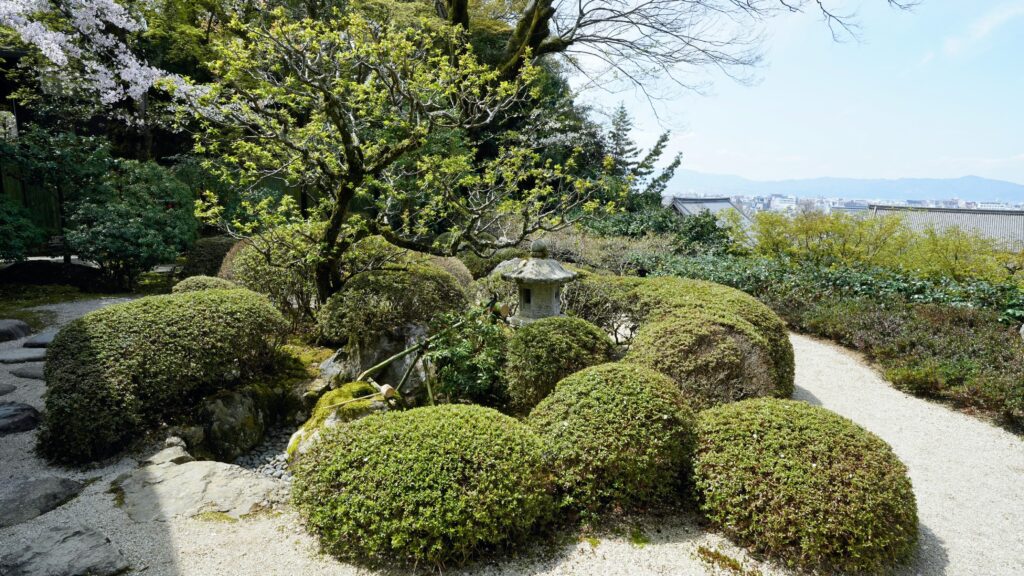
On the elevated area, there is a garden called Santei Garden, featuring a traditional tea garden path. Along this path, you will find a tsukubai (water basin) and stone lanterns that guide the way to the teahouse. From here, visitors can enjoy panoramic views of Kyoto city. The building, known as “Santei,” was originally a villa belonging to Princess Yoshiko, a daughter of Emperor Reigen. It was donated to Chion-in Temple in 1759. The garden itself was created or renovated in the late Edo or early Meiji period.
Yuzenen Garden
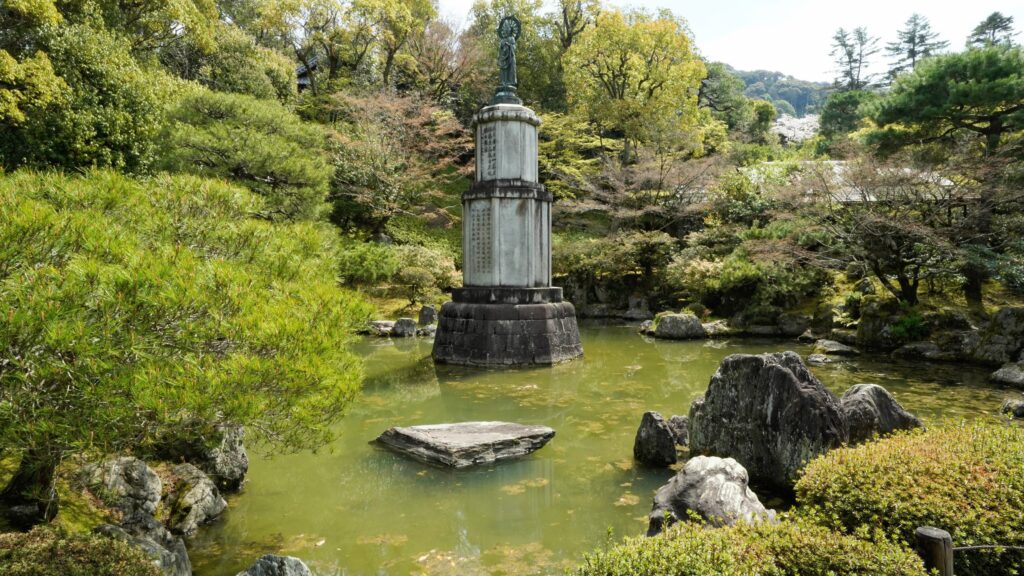
Located next to the majestic Sanmon Gate, the Yuzenen Garden offers a tranquil retreat. Established in 1954 to commemorate the life and work of Miyzaki Yuzen, the garden is a testament to the beauty of nature and the artistry of human creation.
The garden’s harmonious blend of a pond garden fed by a spring from Higashiyama and a serene dry landscape garden provides a peaceful sanctuary. Within this oasis, visitors will find the Karei-an and Hakujyu-an tea houses, which offer opportunities for quiet contemplation and traditional tea ceremonies.
Best season
Spring Season
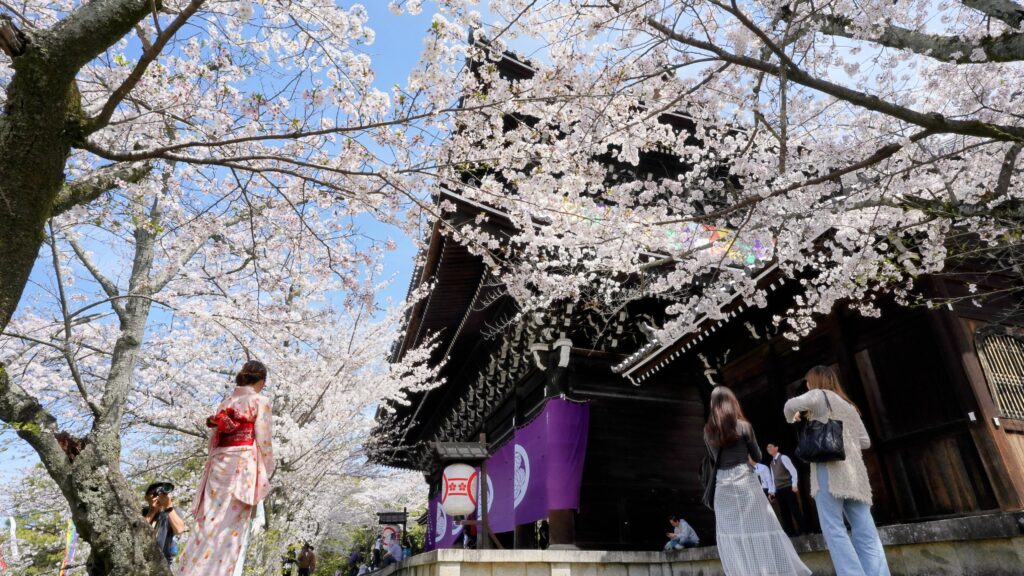
Chion-in Temple is a must-see during the cherry blossom season. The temple grounds are adorned with a variety of cherry trees, with particularly impressive displays on either side of the magnificent Sanmon Gate. The main variety of cherry tree at Chion-in is the Somei Yoshino, Japan’s most popular cherry blossom tree. These trees are known for their beautiful, delicate blossoms and their tendency to bloom all at once, creating a breathtaking spectacle.
In addition to the Somei Yoshino, weeping cherry trees and Oshima cherry trees, the parent species of the Somei Yoshino, also grace the temple grounds during this time. Due to unusually cold weather in March 2024, the Somei Yoshino in Chion-in bloomed later than usual, reaching full bloom on April 9. In 2025, however, the cherry blossoms are predicted to bloom as usual in late March, with peak bloom expected in early April.
Website of Cherry Blossom Forecast
Even if you visit before the peak of the Somei Yoshino cherry blossom season, you can still enjoy the beauty of the early-blooming weeping cherry trees, especially in the Yuzenen Garden and in front of the Hojo Garden.
Another botanical curiosity can be found near the Mieido Hall: a pine tree with a unique characteristic. Unlike most pine trees, which have two needles per bunch, this particular pine tree has only one needle per bunch, making it a rare find.
Illumination
Chion-in Temple is transformed into a magical realm during the Spring Illumination Event, which takes place in late March and early April. The highlight of the event is the enchanting illumination of two early-blooming weeping cherry trees in the Yuzenen Garden. In addition, the temple’s iconic structures, including the National Treasure Sanmon Gate and the Goeido Hall, are bathed in soft light, creating a serene and awe-inspiring atmosphere.
Information
Day Time (Open Hours & Entrance Fee)
Chion-in Temple
| Period | Open Hours |
|---|---|
| December, January, February | 6:00 a.m. – 4:00 p.m. |
| March, April, May | 5:30 a.m. – 4:00 p.m. |
| June, July, August | 5:00 a.m. – 4:00 p.m. |
| September, October, November | 5:30 a.m. – 4:00 p.m. |
Special Open Hours
- New Year: January 1st, 5:30 AM,
- Memorial Service: April 19th – April 25th, 5:00 AM,
- Imperial Edict Transmission Dojo: November 19th – November 24th, 6:00 AM,
- Sect Transmission and Precept Transmission Dojo: December 5th – December 24th, 6:20 AM
Gardens
| Gardens | Open Hours |
|---|---|
| Yuzenen Garden | 9:00 a.m. – 4:00 p.m. |
| Hojo-teien Garden | 9:00 a.m. – 3:50 p.m. |
Entrance Fees
| Gardens | Price |
|---|---|
| Yuzenen Garden | Adults: 300 yen Elementary & joiner high school students : 150 yen |
| Hojo-teien Garden | Adults: 400 yen Elementary & joiner high school students : 200 yen |
| Yuzenen Garden & Hojo-teien Garden | Adults: 500 yen Elementary & joiner high school students : 250 yen |
Special night viewing (Open Hours & Entrance Fee)
Open hours
| Period | Open Hours |
|---|---|
| March,26th – April,6th | 5:45 p.m. – 9:30 p.m. |
Places
Uzen-en Garden, Sanmon Gate, Mieido Hall, Onna-zaka Slope, Amida-do Hall (entry prohibited)
Price
Adults: 800yen, Children(elementaly, junior high chool): 400yen
Adress
400 Rinkacho, Higashiyama Ward, Kyoto, 605-8686
Link & Resources
Official Website
Chion-in Temple(English text)
